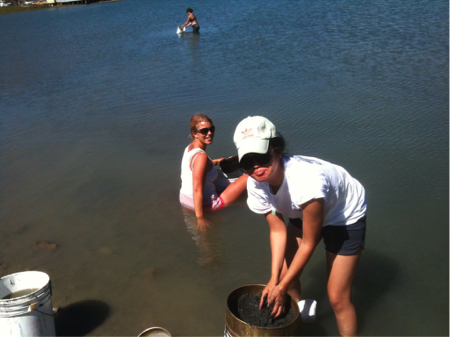By: Bonita Lam
Hi, my name is Bonita Lam, and I am a Ph.D. candidate in the USC Biological Sciences department doing research in Professor Kenneth Nealson’s laboratory. This summer I’ve been lucky enough to be supported by the Norma and Jerol Sonosky Environmental Sustainability Summer Fellowship to work on using microorganisms as environmental catalysts.
Our research lab studies environmental microorganisms that are capable of a mechanism called extracellular electron transport (EET). Extracellular electron transport is a way for microorganisms to gain energy from solid substrates such as minerals and rocks. We (as humans) obtain energy through eating food that contains glucose and breathing oxygen, but these microorganisms are amazing in that they can eat and breathe rocks!
Part of the reason why we are interested in investigating these microorganisms, is that they are found naturally in the environment and can potentially serve as catalysts to clean up toxic pollutants. The bacteria that I am working with were actually isolated from marine sediment around Catalina Island – see the photo of my labmates and I collecting sediment for my project (it’s a total team effort). We selected for microorganisms in this marine sediment that were able to conduct EET and got them into pure culture.

My labmates and I out collecting the sediment that we used originally to find the microorganisms we are working with.
My research this summer focuses on trying to optimize the use of these bacterial cultures as natural catalysts. A lot of my work utilizes electrochemical techniques, where I can use electrodes and control them in a way that makes microorganisms use the energy from them to drive other reactions. These other reactions can turn toxic pollutants from their soluble to insoluble form, preventing the spread of them in the environment to facilitate easier clean up. In addition, these microorganisms can also potentially perform bioelectrosynthesis, by using the energy from electrodes to synthesize useful compounds such as methane biogas.
My goals this summer are focused on trying to understand how these microorganisms are performing EET and figuring out ways to try to maximize and make this process more efficient. I’m hoping by the end of this summer I can demonstrate that these specific bacteria are capable of converting selenium compounds – which are common contaminants of water – to less toxic forms!



